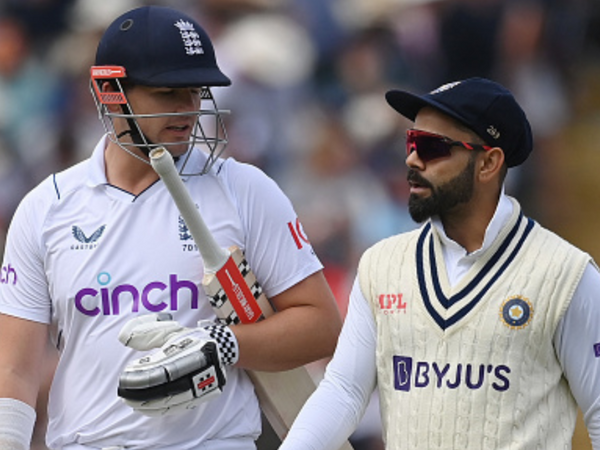
The fourth innings of a Test match has historically been the toughest time to bat. However, there is enough evidence this decade to challenge that notion, writes Shashwat Kumar.
Over the years, there have been countless teams that have botched up fourth innings run-chases. Deteriorating pitches and the pressure of a pursuit have often been factors that have weighed the batting side down. On the surface, very little has changed this decade. But now teams are embracing this challenge.
Moments after Ben Stokes won the toss against India at Edgbaston, he was quick to tell Mark Butcher that England wanted to bowl. Initially, it seemed the decision was only borne out of the cloud cover and the assistance his fast bowlers would get. That, however, was quickly followed by an admission that England had been chasing well, and that they backed themselves to do so again, if a similar situation were to materialize. It did and England stormed to victory by masterminding another incredible fourth-innings heist.
England’s men’s Test team have undergone a startling transformation this summer. They have a clear identity and they have acknowledged that this fearless brand of cricket is what is most suitable to the players they possess. But even for a side of their ilk, the decision to consciously bat fourth, knowing the dangers India could pose on a potentially wearing surface, was quite revealing, especially considering India had triumphed twice already this series having set England a target.
England have recent precedent to draw inspiration from. Against New Zealand, they pulled off three successive fourth innings run-chases – the first time this has happened in their storied Test history. On each occasion, they scored more than 275 runs. At Lord’s, their run-chase was controlled and masterminded by Joe Root. Jonny Bairstow then took matters into his own hands at Trent Bridge, before combining with Ollie Pope and Root at Headingley to complete a clean sweep. England’s chases weren’t without danger. At Lord’s, they stared down the barrel at 69-4. A game later, they were struggling at 93-4 in pursuit of 299. At Headingley, Alex Lees and Zak Crawley departed with only 51 runs on the board. And even at Edgbaston, a mini-collapse after a century opening stand threatened their serenity.
But every time they were forced into a corner, England came out swinging, believing that they could win from any situation. Not because this is, rather unabashedly, the brand of cricket they want to preach, but also because they could plan just what was needed for the rest of their run-chase – a trait many teams have picked up from white-ball cricket. In white-ball cricket, fielding first has become the vogue. The general tendency is to insert the opposition and back their batters to chase it down. For a long time, it seemed that this particular trend wouldn’t permeate into the Test circuit. Now, it has.
Since the start of 2020, teams have scored more than 200 in the fourth innings 24 times. Of those, ten have come in winning causes. India did it at the Gabba in 2021. South Africa did it to India twice in January 2022. England did it three times on the bounce to the Kiwis and have done so once to India. West Indies also hunted down 395 on a tired Chattogram track against Bangladesh in 2020. Pakistan, too, tasted similar success against Bangladesh in November 2021. So, it’s not just a phenomenon that has gripped England,. With Pakistan and West Indies, two teams who have historically not had very stable batting units, also a part of this conversation, it becomes clear that it is a prevalent pattern.
Between 1st January 2016 and 31st December 2019, there were 46 instances of sides scoring more than 200 runs in the fourth innings. Only five of those, though, came in winning causes, indicating that teams might havee scored big but it was, more often than not, inadequate to guarantee victory.
The improvement in fourth innings batting has had a direct impact on how teams have fared in the third innings this decade, tying up into the narrative that only a handful of sides have the wherewithal to set up the game, with most of them being considerably better at reacting.
Between 2016-2019, the overall third-innings batting average in Test cricket was 28.07. This decade, that number has dropped to 24.8. The fourth innings batting average, meanwhile, has gone in the other direction. This decade, that number stands at 27.51. Between 2016-19, it was 22.51.
Batters are actually enjoying batting last more than batting third. It could be because the burden of setting up the game feels greater than just reacting to whatever total is placed in front of them. A prime example could be how Sri Lanka approached their second innings against Australia at Galle a few days ago. The pitch was aiding spinners but it wasn’t a minefield by any stretch of the imagination. However, they still felt that they needed to get ahead of the game very quickly. Eventually, they imploded, handing Australia a nominal fourth innings chase.
All of this adds up to how Test cricket might be undergoing change. England have been the torchbearers of that narrative over the past month and the past few days. But the numbers indicate that this has been in the works since the start of the decade. Batting teams are bolder and they aren’t being put off by tough run-chases. It is, in many ways, a white-ball mindset that has permeated into the Test landscape, where batters back themselves to hunt down anything and everything the opposition puts up.
Fourth innings batting might have historically been the toughest gig. Now, it seems nothing is more fashionable, or routine.








